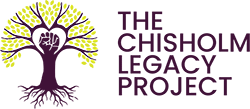Maryland Park Equity Mapper
The Maryland Park Equity Mapper combines layers of demographic and environmental data in order to determine the park equity of different census tracts, allowing users to visualize disparities in park access and quality across the state. The tool was developed by the Community Engagement, Environmental Justice, and Health (CEEJH) Laboratory at the University of Maryland School of Public Health in partnership with the Maryland Department of Natural Resources (MD DNR) and University of Maryland Center for Geospatial Information Science (CGIS). This tool can be used by residents and policymakers in order to identify underserved communities that are in need of new park infrastructure and green space.
Studies have shown that spending time in nature is critical to children’s physical, social, and cognitive well-being. MD DNR cites evidence that children in underserved communities that lack access to nature may be more at risk of childhood obesity, attention deficit disorder, and depression. Furthermore, green space provides essential economic, social, and environmental benefits for community members of all ages. The Maryland Department of Natural Resources developed the Park Equity Analysis in partnership with the University of Maryland in order to better pinpoint areas in Maryland where residents face cultural, socioeconomic, and health barriers to green space.
Resource Details
Related resources (by topic)
Hestia Magic
Hestia is a retreat center that offers weeklong nature sabbaticals, solo retreats, and writing sabbaticals.
James And Grace Lee Boggs Center To Nurture Community Leadership
The mission of the Boggs Center is to nurture the transformational leadership capacities of individuals and organizations committed to creating productive, sustainable, ecologically responsible, and just communities.
LA Green Zones Program: Groundtruthing
The Los Angeles County, California, Department of Regional Planning (DRP) developed the Green Zones Program in 2015, to attain equitable development for the next 20 years, and to help update the Los Angeles County General Plan. Centering on environmental justice and community engagement, the…
New Orleans Climate-Smart Cities Decision-Support/Mapping Tool
In collaboration with the Trust for Public Land, the Office of Resilience and Sustainability in New Orleans, Louisiana has completed a publicly accessible Climate-Smart Cities climate risk mapping and planning tool. This decision support tool is designed to guide green…
Help us expand the Resource Hub
Share resources that you think would be a good addition to this tool and our team will review them for inclusion in future updates.
